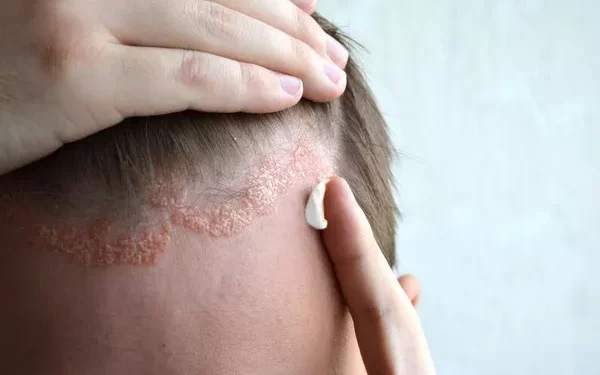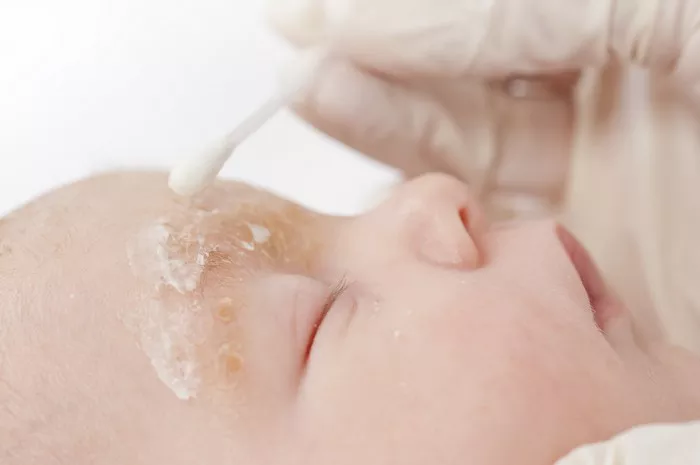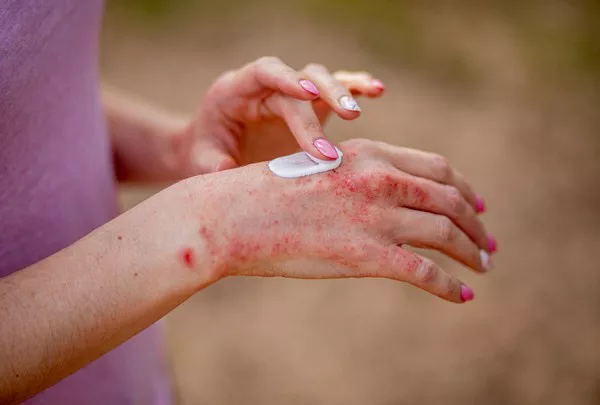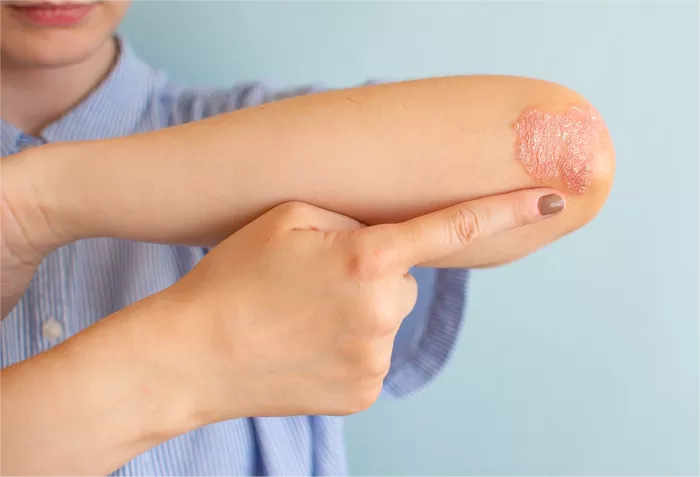Seborrheic dermatitis is a common skin condition that primarily affects areas rich in sebaceous (oil) glands, such as the scalp, face, and upper body. It often appears as red, itchy, and flaky patches, and in some cases, it can also cause scaly, greasy-looking skin. Although seborrheic dermatitis can be a chronic condition, it can usually be managed effectively at home with simple remedies and lifestyle adjustments. Here, we’ll explore how you can treat seborrheic dermatitis at home using natural methods, over-the-counter treatments, and helpful skincare routines.
Understanding Seborrheic Dermatitis
Seborrheic dermatitis is linked to an overproduction of sebum (skin oils) and the presence of a type of yeast called Malassezia, which thrives in oily environments. This combination can trigger inflammation, irritation, and skin flakes. Stress, hormonal changes, cold weather, and certain medical conditions like psoriasis or HIV can worsen seborrheic dermatitis. It is important to remember that this condition is not contagious, and it can be managed with proper care.
Recognizing the Symptoms of Seborrheic Dermatitis
Before treating seborrheic dermatitis, it’s helpful to understand the symptoms. These can vary, but they generally include:
- Redness and irritation, especially in oily areas of the skin.
- Flaky or scaly patches that can range from white to yellowish.
- Itching or burning sensations.
- Oily skin that looks greasy or shiny.
- In more severe cases, hair loss due to scalp involvement.
If you’re experiencing these symptoms, it’s important to rule out other skin conditions like eczema, psoriasis, or fungal infections before proceeding with treatment.
Step 1: Use Anti-Dandruff Shampoos
For those whose seborrheic dermatitis affects the scalp, using an anti-dandruff shampoo is one of the most effective at-home treatments. These shampoos are specifically formulated to target the yeast that contributes to seborrheic dermatitis. Look for shampoos containing the following active ingredients:
Zinc pyrithione: Known for its antifungal and antibacterial properties, it helps reduce the yeast on the scalp.
Ketoconazole: A potent antifungal agent that reduces the growth of Malassezia yeast.
Selenium sulfide: Another antifungal ingredient that helps control flakiness and redness.
Coal tar: Reduces inflammation and slows down the production of skin cells that lead to flaking.
Salicylic acid: Helps to exfoliate and remove dead skin cells, which can reduce flakiness.
Use the shampoo according to the instructions, usually applying it to your scalp for a few minutes before rinsing. Depending on the severity of your condition, you might need to use the shampoo two to three times a week.
Step 2: Try Natural Remedies
There are several natural remedies that can help soothe the symptoms of seborrheic dermatitis. While these methods are not a cure, they can be helpful in managing flare-ups:
1. Tea Tree Oil
Tea tree oil is known for its antifungal, anti-inflammatory, and antibacterial properties. It can help reduce the growth of Malassezia yeast and calm inflammation.
- Dilute a few drops of tea tree oil in a carrier oil, such as coconut oil or olive oil.
- Gently massage the mixture into your scalp or other affected areas.
- Leave it on for about 20-30 minutes before rinsing it out.
If you have sensitive skin, be sure to do a patch test first to ensure you don’t have an allergic reaction.
2. Aloe Vera
Aloe vera is known for its soothing and healing properties. It can help reduce inflammation and moisturize dry, irritated skin.
- Apply pure aloe vera gel directly to the affected areas.
- Leave it on for 20 minutes before washing it off.
Aloe vera can provide immediate relief from itching and irritation. Use it daily or as needed.
3. Apple Cider Vinegar
Apple cider vinegar has antifungal properties and can help balance the pH of the skin. It also helps to exfoliate and remove dead skin cells.
- Dilute apple cider vinegar with an equal amount of water.
- Apply it to the scalp or other affected areas with a cotton ball.
- Leave it on for 10-15 minutes, then rinse it out with lukewarm water.
Be cautious if you have open wounds or sensitive skin, as apple cider vinegar can cause irritation in some people.
4. Coconut Oil
Coconut oil has both antifungal and moisturizing properties. It helps soothe the skin, reduce inflammation, and provide hydration.
- Apply a thin layer of coconut oil to the affected areas.
- Leave it on for 20 minutes to an hour before washing it off.
- You can also leave it on overnight if your skin tolerates it.
Coconut oil is a gentle option for people with sensitive skin and can help prevent dryness and flaking.
Step 3: Moisturize Your Skin
Keeping your skin moisturized is an essential step in treating seborrheic dermatitis. When the skin becomes dry, it can worsen irritation and lead to more flakes. Use a gentle, fragrance-free moisturizer that is designed for sensitive skin.
For the scalp, you can use a lightweight, non-comedogenic oil (such as jojoba or argan oil) to prevent dryness and nourish the skin. When using oils, remember that less is more – a small amount can go a long way in preventing greasy residue while still moisturizing the skin.
Step 4: Avoid Triggers
Seborrheic dermatitis flare-ups are often triggered by external factors such as stress, harsh weather, and skin irritation. While it may not be possible to eliminate all triggers, you can reduce your exposure to them:
Manage stress: Stress can worsen seborrheic dermatitis, so practicing relaxation techniques like yoga, meditation, or deep breathing exercises can help.
Avoid harsh skincare products: Stay away from skincare products that contain alcohol, strong fragrances, or harsh chemicals that can irritate the skin.
Keep your skin cool: Hot, dry weather and excessive sweating can worsen seborrheic dermatitis. Try to avoid hot showers and use a humidifier in dry environments.
Wear breathable clothing: Tight, non-breathable fabrics can cause sweating and irritation. Wear loose, cotton clothing when possible.
Step 5: Follow a Consistent Skincare Routine
Maintaining a consistent skincare routine is crucial for managing seborrheic dermatitis. Establishing a regular cleaning and moisturizing schedule will help keep the skin healthy and reduce flare-ups. Here’s a simple routine to follow:
Cleansing: Use a gentle, sulfate-free cleanser to wash your face and body once or twice a day. Avoid scrubbing the skin, as this can worsen irritation.
Moisturizing: Apply a fragrance-free, hydrating moisturizer after washing to lock in moisture.
Shampooing: Use an anti-dandruff shampoo or prescribed medicated shampoo as directed. For the face and other areas, consider a medicated cream or ointment if recommended by your healthcare provider.
Sun Protection: Sun exposure can either help or worsen seborrheic dermatitis, depending on your skin type. Use a sunscreen with broad-spectrum protection to shield your skin from UV rays.
Step 6: Over-the-Counter Treatments
If natural remedies aren’t providing relief, there are several over-the-counter treatments you can try. These products are formulated to reduce the symptoms of seborrheic dermatitis and help control flare-ups.
Hydrocortisone cream: This is a mild steroid that can help reduce inflammation and redness. Use it sparingly on the face or other sensitive areas.
Topical antifungals: In addition to ketoconazole shampoos, there are antifungal creams and ointments available over the counter that can help target the yeast responsible for seborrheic dermatitis.
Coal tar products: These can help slow down the production of skin cells, which reduces flakiness and scaling.
When to See a Doctor
Although seborrheic dermatitis can often be managed at home, it’s important to see a healthcare provider if your symptoms worsen, don’t improve with home treatments, or if you experience severe hair loss or infection. A dermatologist can prescribe stronger medications, such as topical steroids, antifungals, or immunomodulators, to manage more persistent cases.
Final Thoughts
Seborrheic dermatitis can be a frustrating condition, but with the right treatment and skincare routine, it is possible to manage it effectively at home. By using a combination of over-the-counter products, natural remedies, and lifestyle changes, you can control the symptoms and keep flare-ups to a minimum. Be patient, as it may take time to find the right treatment approach for your skin, and always consult with a healthcare provider if you’re unsure about your treatment options.
Related topics:



























